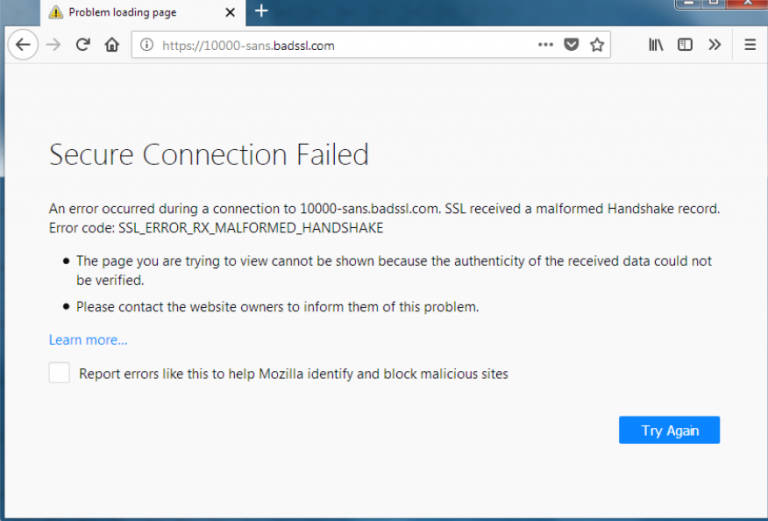
However, in 2000, HTML also became an international standard ( ISO/ IEC 15445:2000).
#TENFOURFOX NO ENCRYPTION OVERLAP SOFTWARE#
Since 1996, the HTML specifications have been maintained, with input from commercial software vendors, by the World Wide Web Consortium (W3C). įurther development under the auspices of the IETF was stalled by competing interests. Īfter the HTML and HTML+ drafts expired in early 1994, the IETF created an HTML Working Group, which in 1995 completed "HTML 2.0", the first HTML specification intended to be treated as a standard against which future implementations should be based. Similarly, Dave Raggett's competing Internet-Draft, "HTML+ (Hypertext Markup Format)", from late 1993, suggested standardizing already-implemented features like tables and fill-out forms. The draft expired after six months, but was notable for its acknowledgment of the NCSA Mosaic browser's custom tag for embedding in-line images, reflecting the IETF's philosophy of basing standards on successful prototypes. It was formally defined as such by the Internet Engineering Task Force (IETF) with the mid-1993 publication of the first proposal for an HTML specification, the "Hypertext Markup Language (HTML)" Internet Draft by Berners-Lee and Dan Connolly, which included an SGML Document Type Definition to define the grammar. However, the SGML concept of generalized markup is based on elements (nested annotated ranges with attributes) rather than merely print effects, with also the separation of structure and markup HTML has been progressively moved in this direction with CSS.īerners-Lee considered HTML to be an application of SGML.
#TENFOURFOX NO ENCRYPTION OVERLAP ISO#
Many of the text elements are found in the 1988 ISO technical report TR 9537 Techniques for using SGML, which in turn covers the features of early text formatting languages such as that used by the RUNOFF command developed in the early 1960s for the CTSS (Compatible Time-Sharing System) operating system: these formatting commands were derived from the commands used by typesetters to manually format documents. Default characteristics for every item of HTML markup are defined in the browser, and these characteristics can be altered or enhanced by the web page designer's additional use of CSS. HTML is a markup language that web browsers use to interpret and compose text, images, and other material into visual or audible web pages. Eleven of these elements still exist in HTML 4. Except for the hyperlink tag, these were strongly influenced by SGMLguid, an in-house Standard Generalized Markup Language (SGML)-based documentation format at CERN. It describes 18 elements comprising the initial, relatively simple design of HTML. The first publicly available description of HTML was a document called "HTML Tags", first mentioned on the Internet by Tim Berners-Lee in late 1991. In his personal notes from 1990 he listed "some of the many areas in which hypertext is used" and put an encyclopedia first. That year, Berners-Lee and CERN data systems engineer Robert Cailliau collaborated on a joint request for funding, but the project was not formally adopted by CERN. Berners-Lee specified HTML and wrote the browser and server software in late 1990. In 1989, Berners-Lee wrote a memo proposing an Internet-based hypertext system. In 1980, physicist Tim Berners-Lee, a contractor at CERN, proposed and prototyped ENQUIRE, a system for CERN researchers to use and share documents. The World Wide Web Consortium (W3C), maintainer of both the HTML and the CSS standards, has encouraged the use of CSS over explicit presentational HTML since 1997. Inclusion of CSS defines the look and layout of content. HTML can embed programs written in a scripting language such as JavaScript which affect the behavior and content of web pages. Browsers do not display the HTML tags, but use them to interpret the content of the page. surround and provide information about document text and may include other tags as sub-elements. Tags such as and introduce content into the page directly.

HTML elements are delineated by tags, written using angle brackets. It provides a means to create structured documents by denoting structural semantics for text such as headings, paragraphs, lists, links, quotes and other items. With HTML constructs, images and other objects, such as interactive forms, may be embedded into the rendered page. HTML elements are the building blocks of HTML pages. HTML describes the structure of a web page semantically and originally included cues for the appearance of the document. Web browsers receive HTML documents from a webserver or from local storage and render them into multimedia web pages. With Cascading Style Sheets (CSS), and JavaScript, it forms a triad of cornerstone technologies for the World Wide Web. HyperText Markup Language ( HTML) is the standard markup language for creating web pages and web applications.


 0 kommentar(er)
0 kommentar(er)
